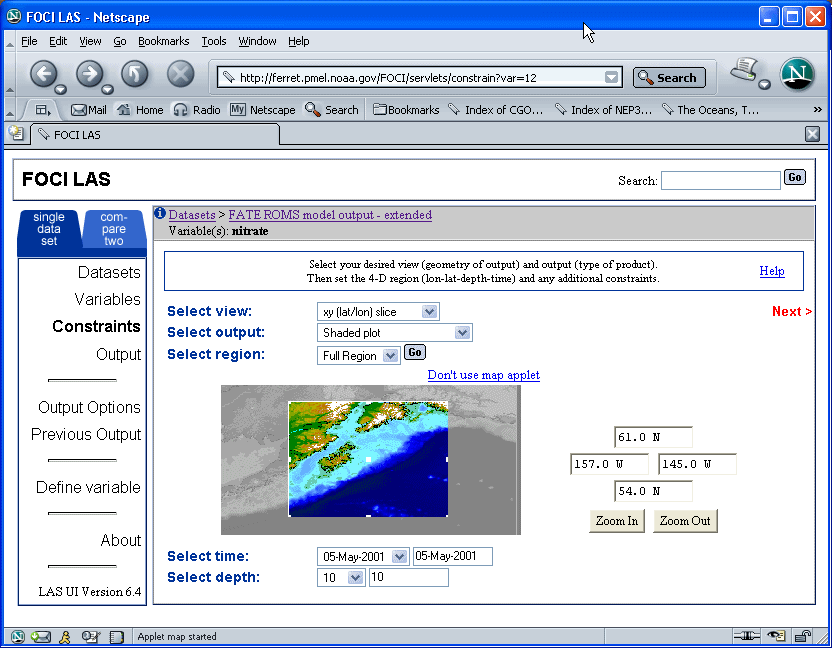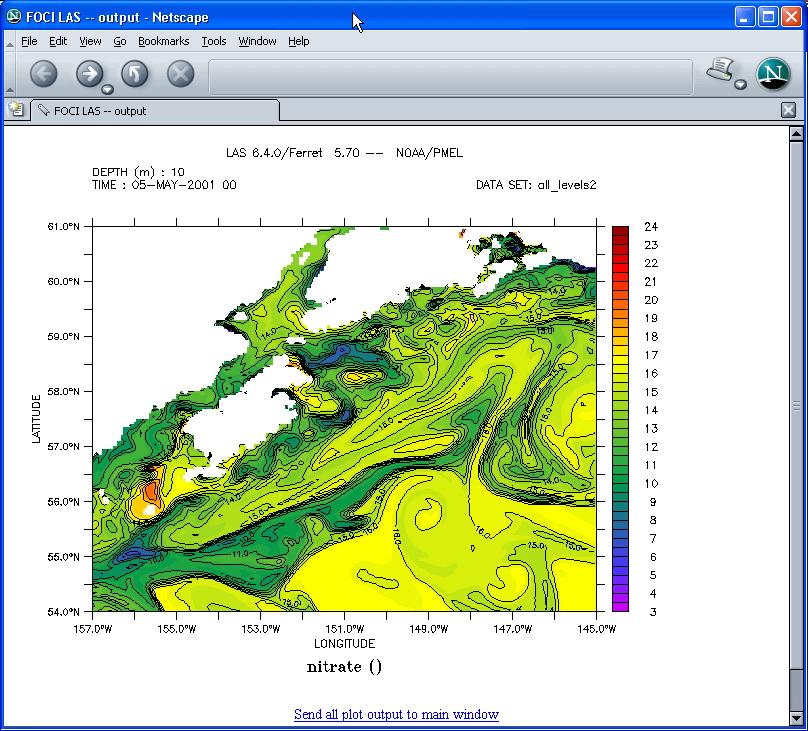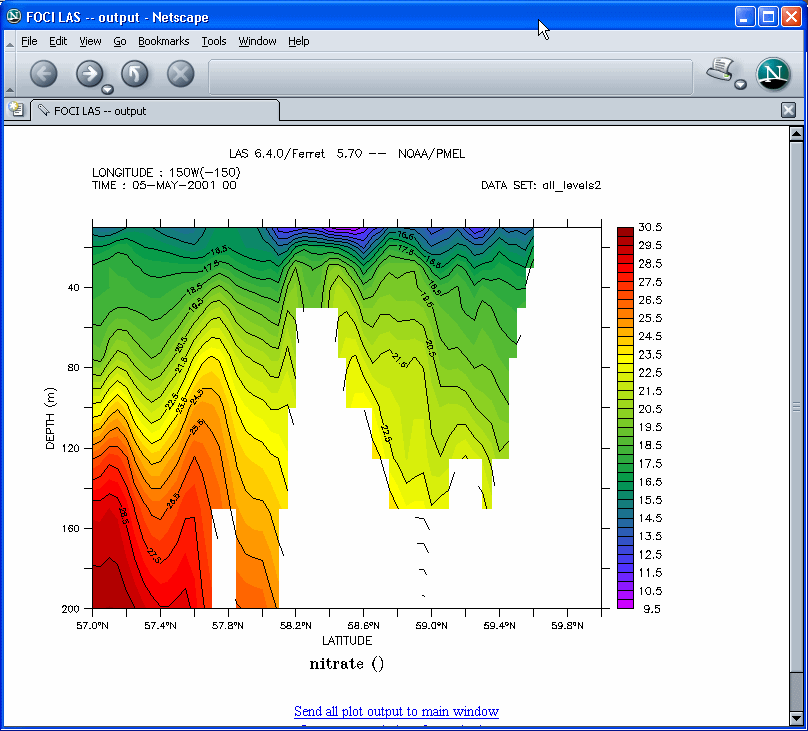
FISHERIES and the ENVIRONMENT:Multi-decadal simulations of
circulation and
walleye pollock in the Coastal Gulf of Alaska
|

Background
Walleye
Pollock, Theragra
Chalcogramma, have been observed to spawn in large numbers within
Circulation Results and Indices
A set of
spatially nested
models are being used for these improved hindcasts, based on the Regional Ocean
Modeling System (ROMS;
Haidvogel et al., Dyn. Atmos. Oceans, 2001), and developed with our
colleagues in the Global Ecosystems Dynamics (GLOBEC)
program. Nested models include the Northeast
Pacific at ~10 km resolution (NEP model, driven with NCEP winds) and
the Coastal Gulf of Alaska at ~3 km resolution (CGOA model, driven with
finer-scale MM5 winds). Sample output (with Sea
Surface Height) is shown in Figure 1:
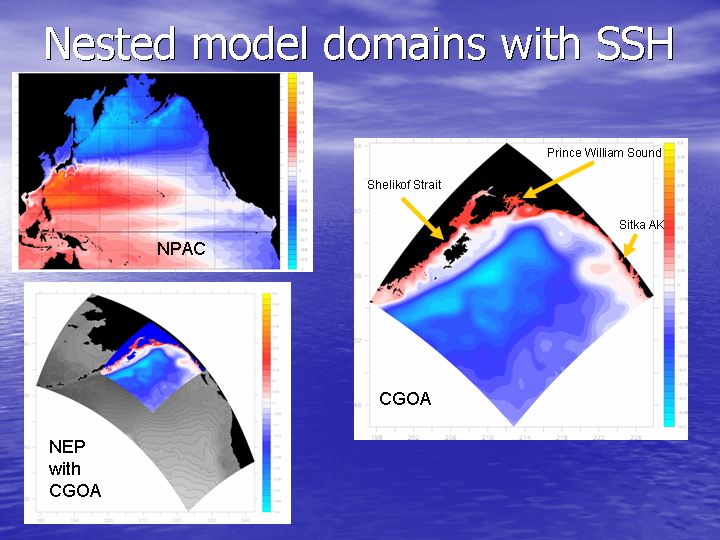
Figure 1. Sea surface
height (m) from runs of three spatially nested models: North Pacific
(NPac), Northest Pacific (NEP) and Coastal Gulf of Alaska (CGOA). SSH
of NEP results are shown in greyscale (lighter color denotes higher
SSH).
Thus far we have completed a
6-year (1996-2002) hindcast of circulation with the NEP model.
Analysis of coastal sea
level
output indicates the 97/98 El Nino and a 98/99 regime shift are
captured by
this simulation. Velocity output from the NEP model has been compared
with current meter data
in
The multiyear results from the NEP model were regressed on the observed flux derived from current meter moorings, to yield the following multiyear index of flux through Shelikof Strait (Figure 3):
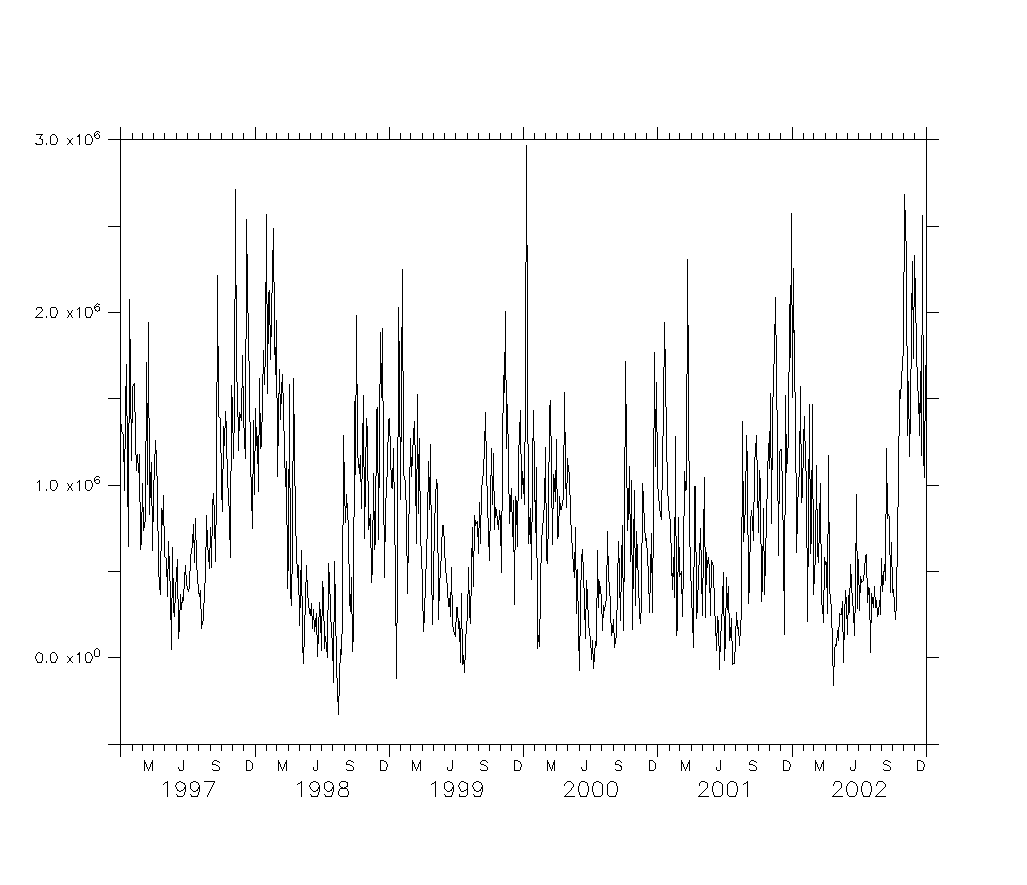
Figure 3. Model-based index of flux through Shelikof Strait (m3/s). Click here for an asci listing of this index
Biological
Results and Indices
The CGOA model resolves strong mixing over tidal banks near Shelikof Strait, and illuminates many of the important details of vertical and cross-shelf nutrient transport not resolvable in the previous FOCI biophysical models. Horizontal and vertical sections from our FATE Live Access Server are shown below. In particular, we have discovered an unanticipated broad upwelling of nutrients over the shelf upstream of Kodiak Island in the spring. As intended, the new models have significantly extended the domain of the earlier models, while enhancing the resolution of crucial vertical and horizontal structure.

To GLOBEC NEP modeling overview
HOME
Contents last updated
Thu, 13 Oct 2004
17:11:14 GMT
Al Hermann - albert.j.hermann@noaa.gov

